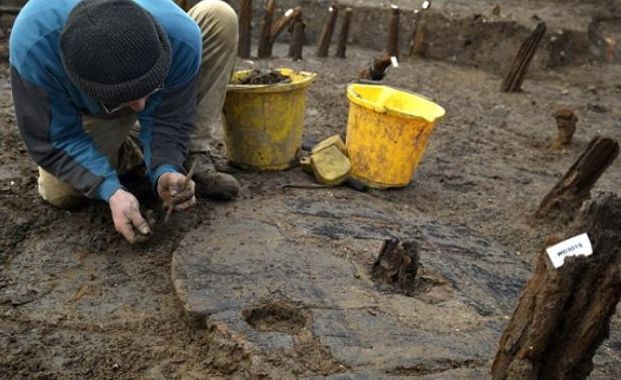Advertisement
3,000-Year-Old Perfectly Preserved Wheel Discovered in England
| By Lauren Boudreau
Advertisement - Continue reading below

The largest, most complete wheel from the Bronze Age has been unearthed in Cambridgeshire Fenland in England. The artifact is 3,000 years old, a meter in diameter, and around 3.5 centimeters thick. This discovery signifies a time when “wheel technology” was first introduced to Britain.
The wheel was found still attached to its hub, according to The Guardian. It was also severely burned due to a fire that had burned down its settlement nearly 3,000 years ago. The settlement stood on stilts above a river, but when it burned, everything, including the wheel, fell in. A woman’s skull was found among the remains, as well as bones from animals that were eating. Cutlery, dishes, and jewelry boxes were also unearthed.
Francis Pryor, one of the most famous archaeologists in England, told The Guardian, “This is the site I have been looking for all my life.”
Mark Knight, of the Cambridge archaeology unit, told The Guardian he thinks the wheel was hung up on a wall, possibly brought in for repair.
“My hunch is that 3,000 years ago there was a cart parked up on the dry land, with a wheel missing,” he said.

The fact that the settlement was found to be eating land animals instead of fish from the river it stood on, indicates the settlement was wealthy, as they probably had herds of domestic animals nearby. Experts think that perhaps the settlement was a popular trading post.
The wheel was most likely meant for heavy-duty hauling. It was built with five panels of timber, was well-crafted, and had a hole in the center, some 12 centimeters in diameter for the axle.
The wheel dates back to around 1000 BC.
Advertisement - Continue reading below
Share
On Facebook
